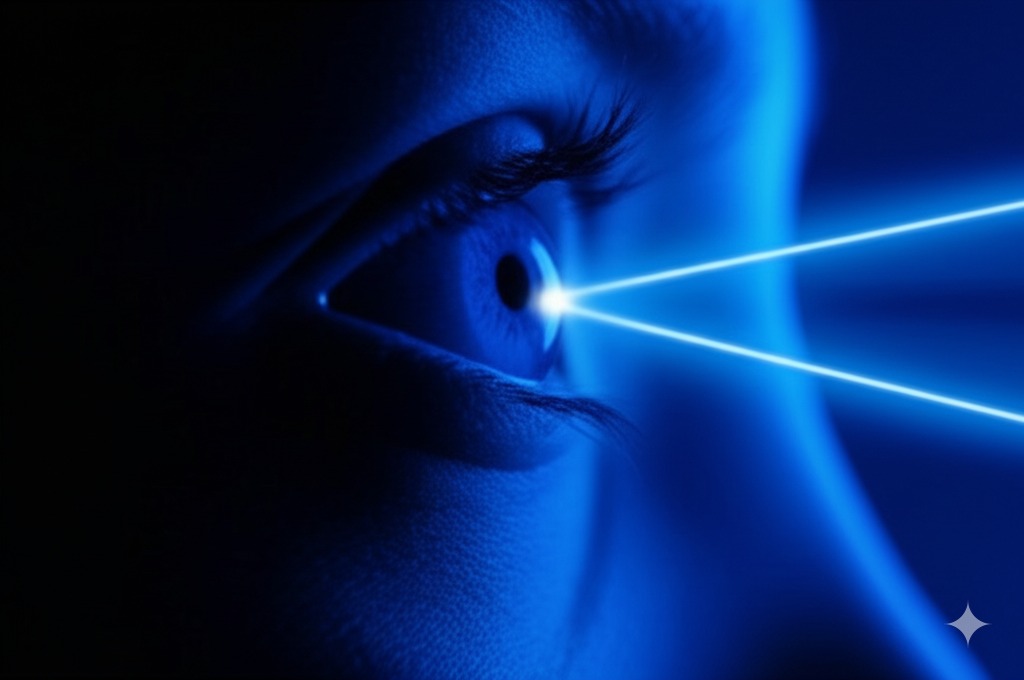Blue Light Blues: How Screen Time Disrupts Sleep and What to Do About It

In our digitally connected world, screens are ubiquitous – smartphones, tablets, computers, TVs. While they offer convenience and entertainment, the blue light emitted by these devices can significantly interfere with our natural sleep patterns, particularly when used close to bedtime.
Blue Light and Your Internal Clock
Our bodies operate on an internal 24-hour clock called the circadian rhythm, which regulates cycles of sleepiness and wakefulness. This rhythm is heavily influenced by light exposure. Natural sunlight, which contains a full spectrum of light including blue wavelengths, signals to our brain that it's daytime and time to be alert.
The problem arises in the evening. Artificial light sources, especially the energy-efficient LEDs used in most modern screens, emit a high concentration of blue light. When our eyes are exposed to this blue light at night, it tricks the brain into thinking it's still daytime. This disruption primarily affects the production of melatonin, the hormone responsible for signaling sleepiness to your body. Exposure to blue light in the evening hours significantly suppresses melatonin release, making it harder to fall asleep and potentially shifting your entire sleep schedule later.
- Melatonin Suppression: Blue light exposure in the evening significantly suppresses the production of melatonin, the key hormone that signals sleepiness to your body.
- Circadian Rhythm Shift: This melatonin suppression delays your internal clock, making it harder to fall asleep at your desired bedtime.
- Increased Alertness: Blue light directly promotes alertness, further counteracting the natural drive to sleep.
Strategies to Minimize Blue Light Disruption
You don't necessarily have to give up your devices entirely, but managing your exposure, especially in the evening, is key:
- Establish a Digital Curfew: Aim to stop using screens (phones, tablets, computers, TVs) at least 1-2 hours before your intended bedtime. The earlier, the better.
- Use Night Mode/Blue Light Filters: Most smartphones, tablets, and computers have built-in settings (often called "Night Shift," "Night Light," or similar) that reduce blue light emission and shift the screen towards warmer colors in the evening. Enable these features.
- Blue Light Filtering Glasses: Consider wearing glasses designed to block blue light during the evening hours if screen use is unavoidable.
- Dim Screen Brightness: Lowering the overall brightness of your screens in the evening can also help reduce light exposure.
- Choose Relaxing Activities: Replace evening screen time with non-digital activities like reading a physical book, listening to music, taking a bath, or light stretching.
- Optimize Bedroom Lighting: Use dim, warm-toned lighting (like lamps with low-wattage incandescent or warm LED bulbs) in your bedroom in the evening instead of bright overhead lights.
- Keep Devices Out of the Bedroom: The best strategy is to make the bedroom a screen-free zone to avoid temptation and accidental exposure.
Beyond Blue Light
Remember that it's not just the blue light; the engaging nature of content on screens (social media, news, games) can also keep your mind active and make it harder to wind down, regardless of the light color.
Managing blue light exposure, particularly in the hours before bed, is a critical component of good sleep hygiene in our modern world. By implementing a digital curfew, utilizing filtering tools, and opting for relaxing, screen-free evening activities, you can help protect your melatonin production and support your natural sleep-wake cycle for a more restful night.



